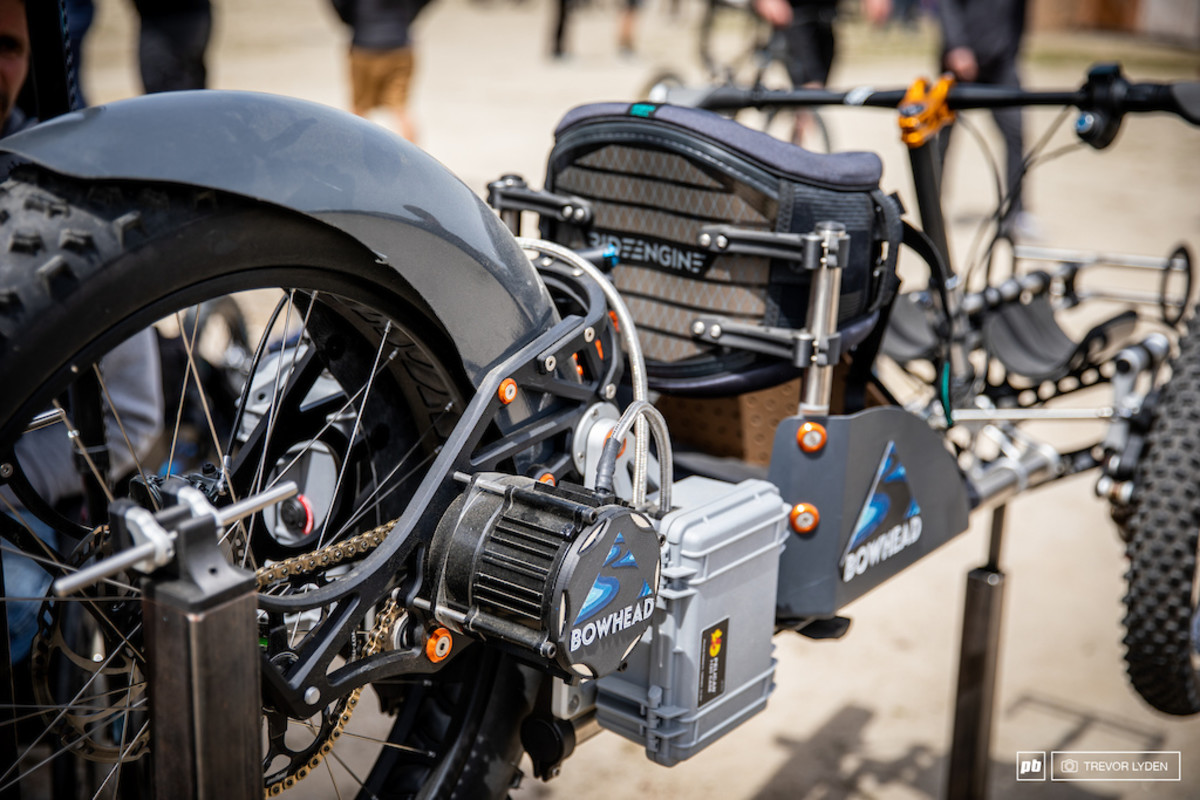
The best way to describe the Bowhead Reach may be through exclusion. “It’s not a mountain bike or an electric bike or an ATV or a wheelchair,” says Christian Bagg, the 44-year-old inventor and founder of Bowhead Corp. “I don’t know what it is, but I do know there’s nothing else like it.”
For the doors it has opened, however, the future of this odd adaptive speed machine is defined by inclusion. “The Reach allows disabled people to get part of their life back they thought was gone forever,” says Bagg. “And not in a half-measure.”
The Reach looks like the badass lovechild of a dune buggy and electric mountain bike. Long and low, it’s got handlebars and a scoop seat, an electric bike engine and a throttle, disc brakes and a carbon fiber fender and three knobby tires, two up front and one taller one behind. In between the front wheels is the most important part: an articulating axle. It makes it possible for paraplegics to rail the Reach around banked corners, huck it off 15-feet jumps in bike parks, roll off-camber rock drops and navigate just about any trail.
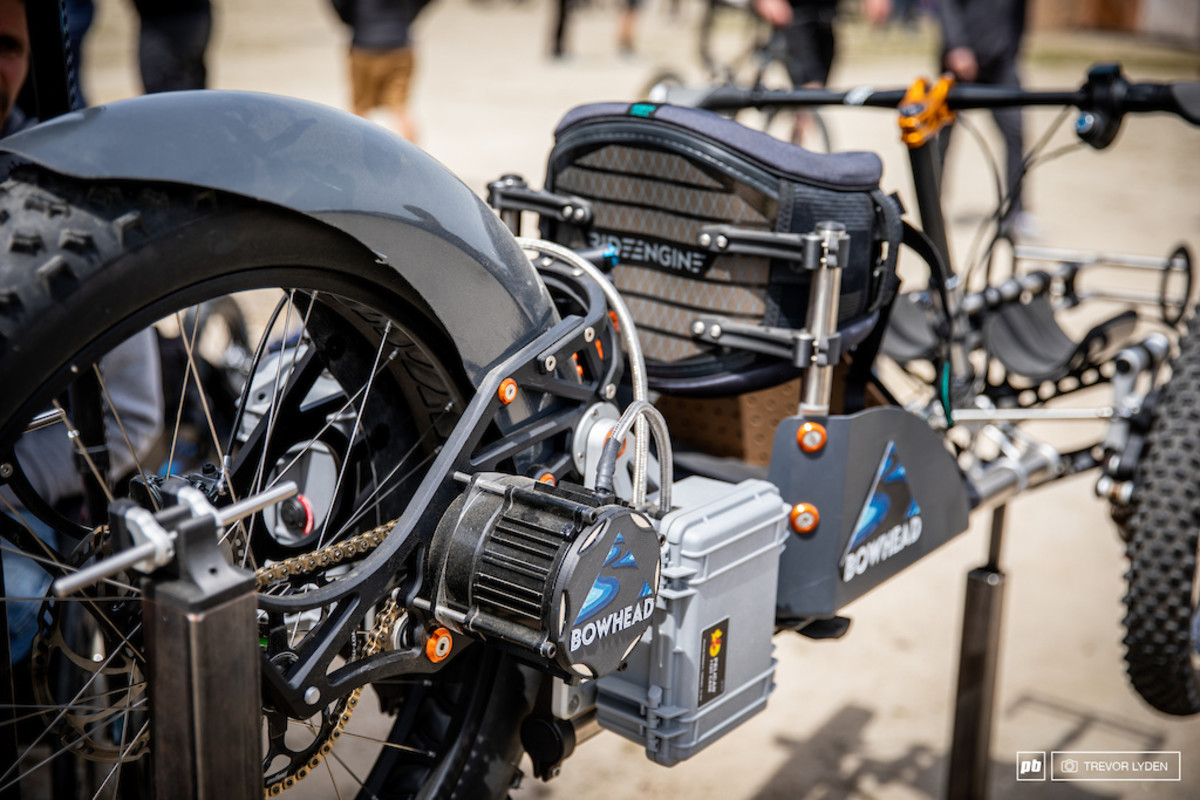
Adapting to Adversity
Bagg would know. He developed the Reach for himself. In 1996, at 20 years old, he broke his back in a snowboarding big-air competition. Paralyzed from the waist down, he knew he’d never snowboard again, but even more crushing was that he thought he would never go for another mountain bike ride. An optimist and problem solver, Bagg didn’t let his new reality get him down. Being 6’4″, no wheelchair fit him. Within a year of his accident he used his tinkerer’s brain and machinist skills to build his own. That led to developing adaptive equipment for other disabled people and finding creative solutions to his own challenges.
The most ground-breaking innovation came to him 20 years after his accident. Searching for a way to keep his cross-country skis edging on a sidehill, Bagg came up with the idea for an articulating joint between his skis. He quickly saw the potential for it on dirt too. The articulating parallelogram-shaped front axle became the key link in the Reach, allowing the front end to follow the terrain, while the rest of the machine stays flat.“What’s unique about this is that the leaning and steering are not connected,” explains Bagg. “I can be on a 30-degree side slope and still be level. No other adaptive bike or vehicle does it.”
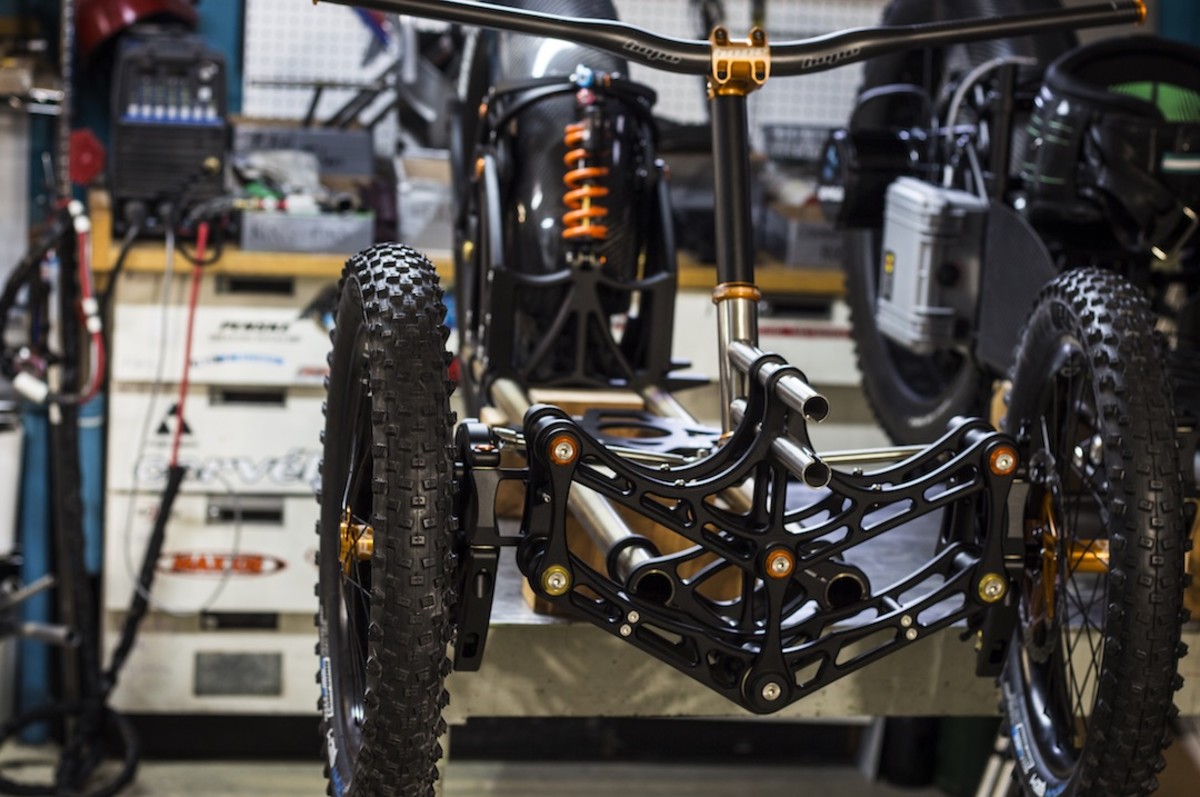
The other key piece is the electric motor. The original design had hand-crank power. Combined with its narrow profile, Bagg could sweat his way into a lot of places that no wheelchair or adaptive vehicle could reach. On the trail, he and his Reach drew a lot of attention. Enough that he started Bowhead as a side-hustle, building Reaches for accessibility groups out of the basement of his Calgary, Alberta, home. One requested an electric motor. Bagg resisted, but eventually gave in.
“It took me 100 yards to get religion on it,” he says. “It wasn’t me proving to the world what I can do. It was just simple fun.”
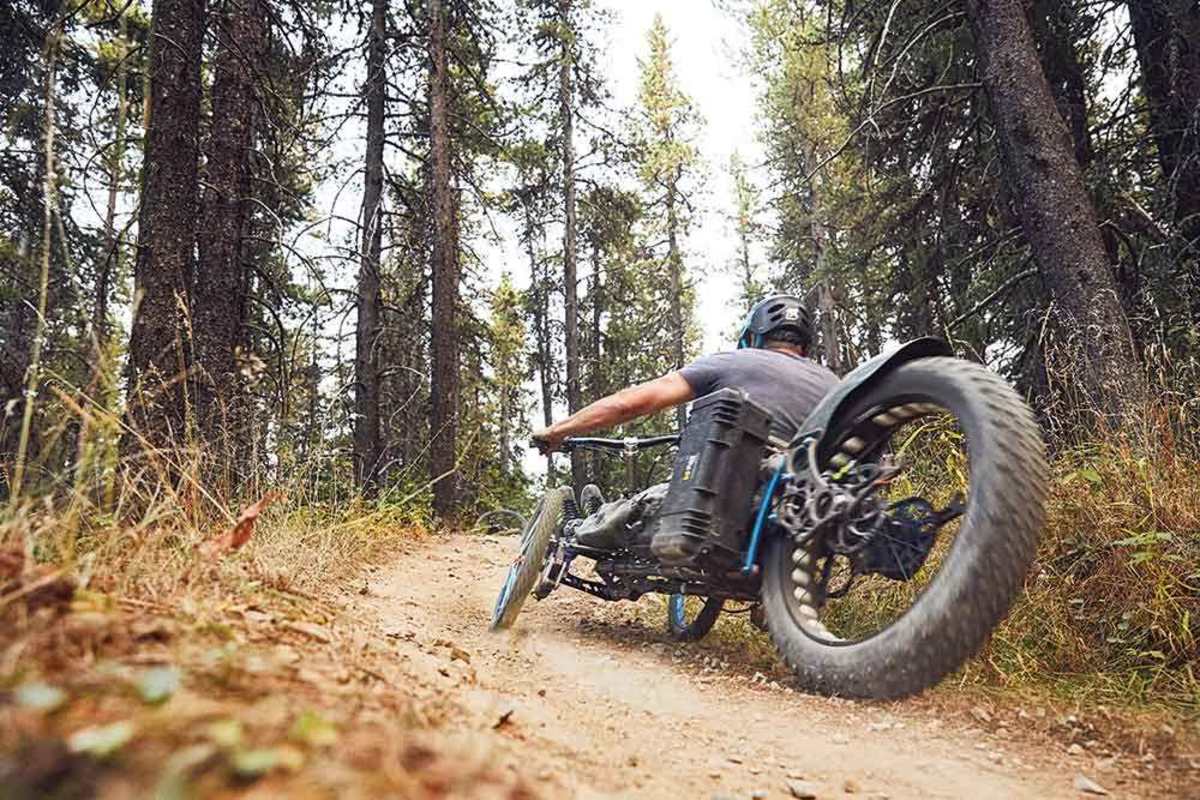
Passion Project
The extra horsepower enabled Bagg to go for a mountain bike ride with his buddies for the first time in 22 years. “If I had hand-cranked, everyone on the ride would’ve decided whether to wait for me or go for a bike ride,” he says. “It was so important to me that I could just join their experience. With the Reach I became part of the group. ”
It reignited his love of speed and excitement, climbing up mountain trails and bombing back down. Images and video of his impossible-seeming, but three wheels on the ground, exploits soon attracted other adrenaline junkies looking to get their passion back. One was a paraplegic who used to race motocross. Within a few hours of getting his Reach, he sent Bagg a picture of himself six feet off the ground with a note saying, “It actually jumps really well.”
Bagg dismissed him as a freak, but then the next person who bought one jumped theirs too. And the next and the next. Now search #BowheadReach and dozens of videos and pictures show up of people all over North America launching theirs off dirt jumps and wooden launches, racing mountain bikers on double-black downhills and skidding sideways through dusty corners.
“It’s pretty undeniable,” Bagg says. “It’s clearly its own sport.”
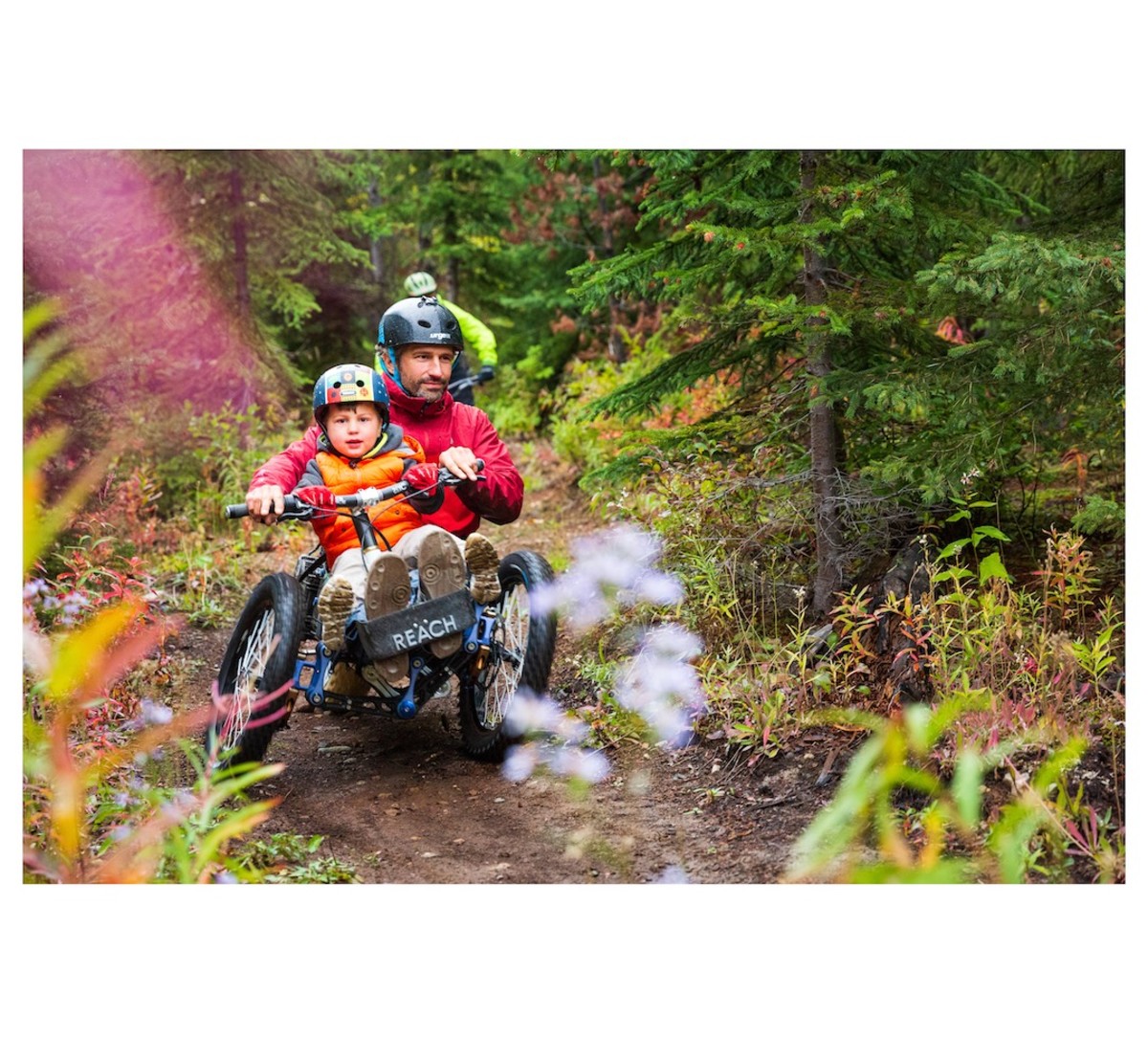
Reaching for More
Before the COVID-19 pandemic canceled everything, the Reach would have debuted in competition. Disabled athletes would have used it to race mountain bikers down the dual slalom course at the Sea Otter Classic, one of mountain biking’s biggest events. Kurt Sorge, a top freeride mountain biker, had so much fun when he tried a Reach, he wanted to hold a contest of able and disabled athletes both on Reaches. These events, and more, should happen in 2021.
Bagg thinks the Reach is most suited to a format that combines a dirt biking-style technical hill climb with a downhill speed event, like mountain biking. But he also doesn’t think it’s his place to decide.
“Two years ago I was the best Reach rider in the world, because I was the only one,” Bagg says. “I’m excited to see where the athletes push the progression. I have no idea what the Reach is capable of.”
[embedded content]
For access to exclusive gear videos, celebrity interviews, and more, subscribe on YouTube!






